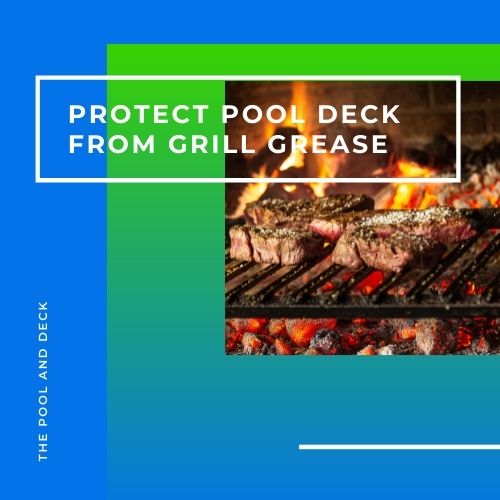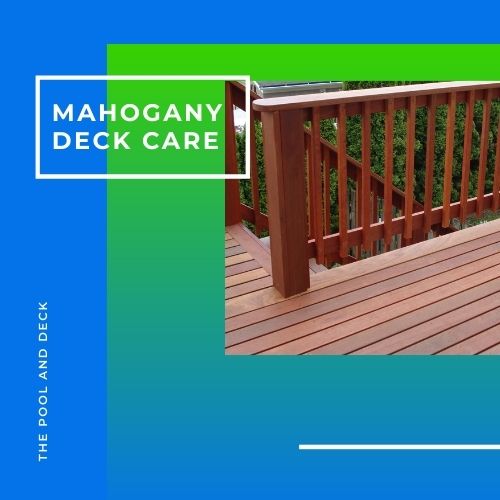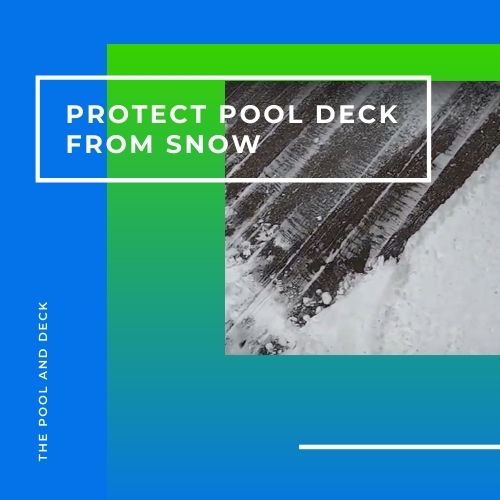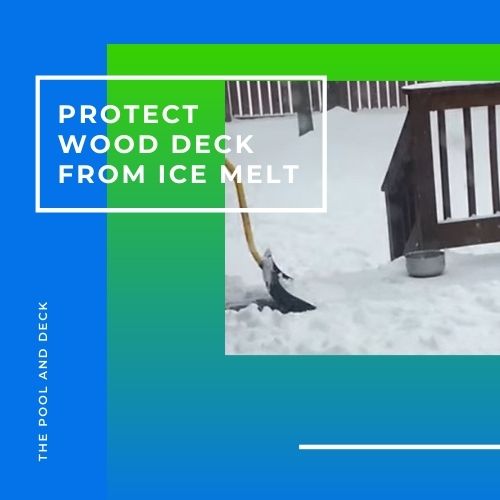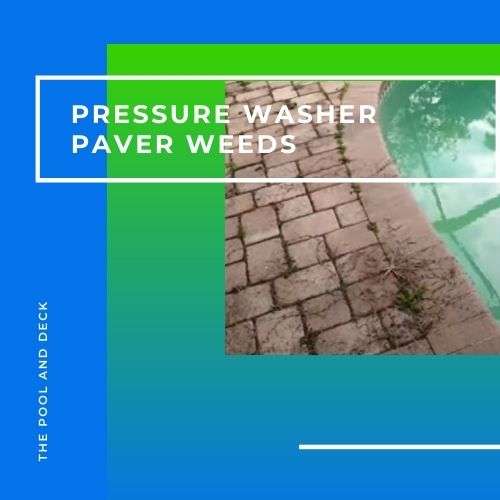How to Clean A Limestone Pool Deck? (10 Really Helpful Answers!)
As an Amazon Associate, I earn from qualifying purchases.
Table of Contents
1. How Do You Clean a Limestone Pool Deck?
Limestone pavers or tiles make for a pristine, beautiful pool deck. But how to clean a limestone pool deck so that the beauty lasts? The off-white, ivory or light gray palette of limestone can spell class with simplicity. Limestone, however, is not forgiving. The dirt and stains can embed deep into limestone pavers and are more visible. So, how do you clean a limestone pool deck?
You must sweep & clean a limestone pool deck regularly using mild & pH neutral cleaners only. Limestone is quite porous. Resealing the pool deck, every 1-3 years, will enhance the looks and longevity.
A limestone pool deck, being an outdoor area, is exposed to the elements. Sunlight, heavy rain, dust storms and winter snow are constantly whittling away the beauty of your pool deck. If that is not enough, the deck also has to deal with boisterous children and sometimes, sloppy diners.
The deck will be covered in dust, dirt and dry leaves from the yard. Algae, mold & mildew may start growing on the often wet, pool deck. And of course there is always the aftermath of the fun weekend pool party!
You have to clean your limestone pool deck pretty regularly, if you want it to look as good as new!
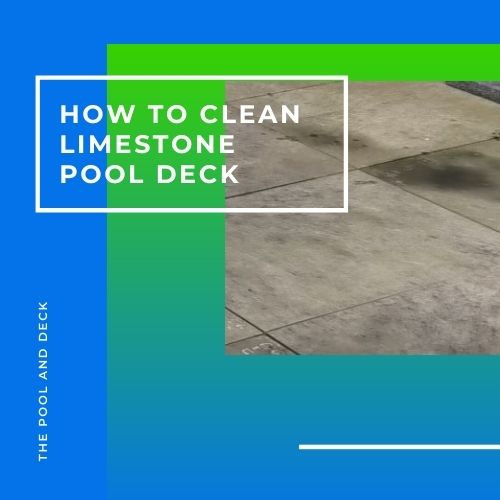
2. How To Sweep a Limestone Deck?
A limestone tile or paver is porous. Likely that it also has a textured finish. Tumbled or sandblasted limestone pavers are quite popular.
Regular Sweeping will make it Easier
To ensure you can clean your limestone pool deck, without getting overwhelmed, you should break up the activity into manageable tasks. And then set up a schedule for each task.
If you have a large deck, divide it into 4-5 sections. Then you can sweep one section each day of the week. For a smaller or indoor pool deck, sweeping once a week may be enough.
Sweep while the Deck is Dry
An easy way to clean your limestone pool deck is to sweep it with a broom while it is still dry. This way you give the dust less chance to get wet and embed itself in the porous, textured limestone paver.
Sweeping the deck will also remove any sharp objects that can scratch the paver or hurt bare feet.
Sweep before the Deck is Used
The best time to sweep your pool deck is before you, your family and your friends are going to use it. For one, the deck will still be dry. Sweeping ahead of use, not only makes it more presentable, it also makes it safer.
Keep it Simple
Use a broom or a soft brush. Make sure that you get the dust out of any cracks in the tile, paver or grout. You can also use a dry mop, if the surface is relatively smooth.
Rinse the Pool Deck
After sweeping, you can wash the deck with water to clean any remaining dirt. Just use the garden hose.
3. Can I Pressure Wash Limestone?
You can pressure wash limestone provided you:
- Use the lowest setting on the pressure washer. High pressure can abrade and chip the limestone
- Keep the pressure washer nozzle at least 1-2 feet above the limestone deck
- Pressure wash only occasionally. Rinsing with the garden hose will do the job most of the time
- Test the status of the sealant on the limestone paver after an intense pressure wash. You may need to reseal
Regular sweeping and occasional water rinsing is a good start to keeping your limestone pool deck clean. However, there will be situations when sweeping & rinsing will not be enough.
Sooner, rather than later, your limestone pool deck will get stains, mold & mildew. Limestone tiles & pavers are porous, so stains, mold, mildew, etc. penetrate deep. You will have to resort to some sort of cleaning chemicals to get rid of them.
You can not use any cleaner, as acidic or alkaline cleaners can damage your lovely limestone pool deck.
4. Can You Use Vinegar to Clean Limestone?
You should not use vinegar to clean a limestone pool deck, as vinegar is acidic and will damage limestone.
When crustaceans such as crab, snails, clams, coral, etc. die their shells get deposited on the ocean floor. Over millions of years, each layer gets compressed under the weight of the layer above to form limestone. Limestone is naturally rich in calcite (calcium carbonate)
Vinegar is about 4-6% acetic acid in water. Acetic acid will react with the calcite (CaCO3) in limestone and break it down to carbon dioxide (CO2) .
When you place a drop of weak acid, such as vinegar, on calcite, it will bubble. This happens because a reaction causes a little bit of the calcite to break down, releasing carbon dioxide gas, making the bubbles.
Windows2Universe
5. Can I Use Bleach on Limestone?
No, you should not use bleach to clean a limestone pool deck.
The reason for not using bleach on limestone, is exactly the same as the reason for not using vinegar.
Bleach is basically liquid chlorine used to sanitize the pool water, but with half the concentration of sodium hypochlorite. Bleach mixed with water results in hypochlorous acid, which is the active ingredient.
Any acid, including hypochlorous acid, will attack calcium carbonate and break it down. The process is slow but it is there.
You should not use bleach, vinegar or a citric cleaner to clean a limestone pool deck as acids, even mild acids, will corrode the calcite in limestone.
6. Can You Use Baking Soda on Limestone?
Sometimes, the use of baking soda is recommended to clean stains on limestone tiles and pavers.
The recommendation is to use a 50:50 mix of baking soda & water and apply the paste on the stained area. Leave it for 15-30 minutes. Wipe off the paste with a sponge or rag.
However, I and a lot of stone experts do not recommend that you use baking soda on limestone. The baking soda may be able to remove the stain but it will also damage the limestone tile or paver.
Baking soda is in fact Sodium Bicarbonate. Baking soda is an alkali and has a pH of 8.4 or more.
Alkalis, just like acids, will react with and corrode the calcite in limestone.
Avoid using baking soda to clean the stains from your limestone pool deck. There is a better alternative.
7. Can You Use Ammonia on Limestone?
Just like bleach, ammonia is a common household cleaning chemical. The household ammonia is, in fact, Ammonium Hydroxide, which is an alkali.
Ammonia has a pH of 11 and is even more alkaline than baking soda. Do not use ammonia to clean your limestone pool deck. You will cause irreparable damage.
Both baking soda and ammonia are alkaline and are harmful to the looks & longevity of limestone tiles & pavers.
8. What Cleaners Are Safe for limestone?
Limestone is a sedimentary rock characterized by high porosity and high calcite content. Both acids & alkalis will corrode limestone.
So you must always use pH neutral cleaners on limestone.
Black Diamond’s Stone Wash is formulated specifically to clean porous natural stone surfaces such as limestone & travertine. Stone Wash is pH neutral and biodegradable. Stone Wash lifts dirt effortlessly from natural stone without damaging the surface or diminishing natural stone color.
9. How Do You Get Stains Off Limestone?
The best way to remove stains and kill off mold & mildew on limestone pavers is to use poultice.
Poultice is pH neutral and based on hydrogen peroxide. Hydrogen peroxide works best on limestone.
To get rid of stubborn stains it is best to use Miracle Sealants Poultice Plus. It is an easy to use, fine, non-acidic absorbent powder. The bleach free formula works, when mixed with distilled water, to draw stains out from limestone pavers & tiles.
Mix Poultice Plus with “distilled water” to form a peanut butter like paste. Apply the paste directly to the stain approximately 1/4″ – 1/2″ thick. Overlap the stain by approximately 1/4″- 1/2″.
Cover the paste with plastic wrap and tape the plastic with “non marking” tape to create an airtight seal. Allow the paste to dry completely, approximately 24 – 48 hours.
Remove the plastic wrap and scrape the dried paste from the substrate with a plastic putty knife or spatula. Rinse off all residue with clean “distilled water”.
10. How Often Should Limestone Be Sealed?
Impregnating Stone Sealers penetrate into the pores of the limestone paver, solidify and block them. The natural texture & appearance remains unchanged. Water, stains or harmful chemicals can not enter the pores.
A good impregnating sealer such as Miracle Sealants 511QT6 511 Impregnator Sealer will last 1-3 years on a limestone pool deck. The actual life depends on limestone texture, foot traffic and even the strength of the power wash.
You can check if the sealer is still effective or not, by sprinkling a few drops of water on the limestone surface. If the water beads up, then the sealer is still effective. But if the water gets absorbed then it is time to reseal.
Limestone pavers used on pool decks must be sealed. Do make sure to reseal them if the sealer has worn off.
You can find out more by reading my earlier post Do Limestone Pavers Need to Be Sealed? (Why It’s Important!).
Thank you very much for reading the post. I do hope you found it informative and helpful.



